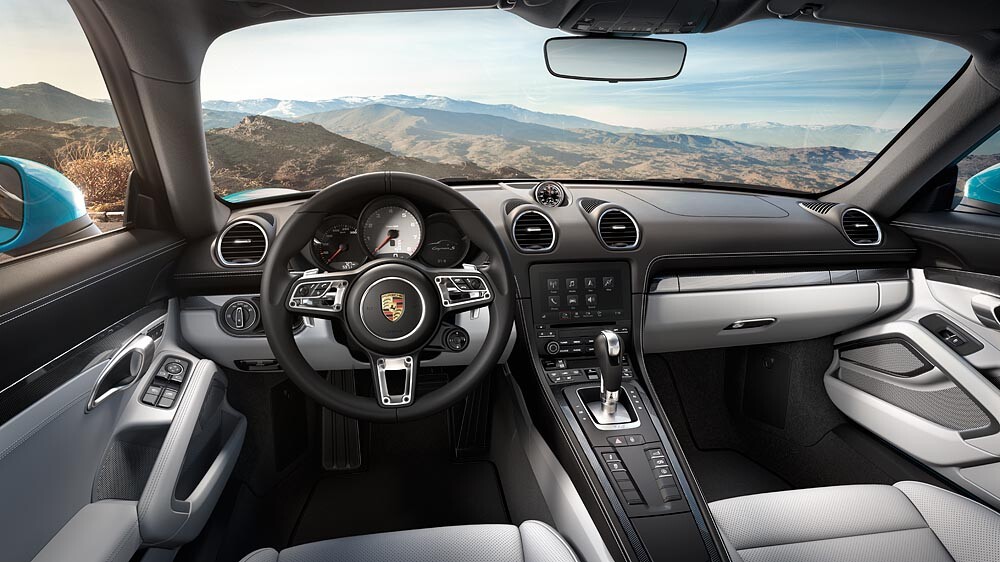Fans of natural aspiration, look away now: the Porsche Cayman has joined the growing list of sports cars to adopt turbo power. The mid-engined coupe joins the Boxster in employing a downsized flat-four engine for a fatter torque curve and improved fuel economy, but whether it will sound and feel as thrilling as the outgoing car remains to be seen.
Before we get to the new turbo motor, it's worth asking "what's in a name?" Rather than stick with the basic Cayman designation of this model, Porsche has reached into the archives and pulled out the 718 name from its flat-four racecars that won the Targa Florio and European Hill Climb Championship during the period between 1957 and 1962.
The link between the 718 of the'50s and '60s and today's Cayman lies in the flat-four engines. Whereas the old Cayman was powered by a 2.7-liter flat-six and the upscale S model used a 3.4-liter six, the new base model gets a 2.0-liter flat-four, while the faster model calls on a 2.5-liter four.
Thanks to the magic of turbocharging, these smaller engines are both 19 kW (25 hp) more powerful than the cars they replace. The 224-kW (300-hp) 2.0-liter base model also benefits from a hefty torque bump, with an extra 91 Nm (67 lb.ft) of torque for a total of 380 Nm (280 lb.ft) on tap between 1,950 and 4,500 rpm.

With an extra 500 cc of displacement and the variable geometry turbo tech from the 911 Turbo under its belt, the Cayman S punches out 261 kW (350 hp), while there's 419 Nm (309 lb.ft) of torque available between 1,900 and 4,500 rpm. With all this extra power, the 100 km/h (62 mph) sprint takes 4.7 seconds in the base model, and 4.2 seconds in the S.
Regardless of how much power it generates, the new Cayman needs to retain the balanced handling its predecessor is famous for. According to Porsche, the new car's firmer springs, swaybars and retuned shock absorbers contribute to improved lateral grip and stability, while the new steering rack is based on the unit found in the 911 Turbo.
There's also an uprated brake system, with rotors measuring 330 mm (13 in) at the front and 299 mm (12 in) at the rear. In the base model 718, the system has been taken from the outgoing Cayman S, and the new 718 Cayman S has the thicker front brake rotors and four-piston calipers from the 911 Carrera.

To distinguish the turbocharged Cayman from its naturally-aspirated predecessors, Porsche has reworked the exterior and brought it into line with the styling direction we first saw on the 718 Boxster. There are big air intakes along the flanks of the car, and the front bumper is designed to make the nose look low and wide. Also new are the LED daytime running lights, raised strip on the rear bumper and clear-lensed taillights.
Inside, the upper part of the dashboard has been redesigned. Alongside a 918-style wheel Porsche has fitted its latest PCM infotainment system, giving buyers access to the same Apple CarPlay technology that recently made its way into the manual Aston Martin Vantage.
As you'd imagine, there's a long list of options available on the new Cayman – everything from voice control to Porsche Active Suspension Management can be specced, meaning very few buyers will end up staying close to the US$53,900 starting price. The first cars will reach dealers in late November this year.
Source: Porsche











